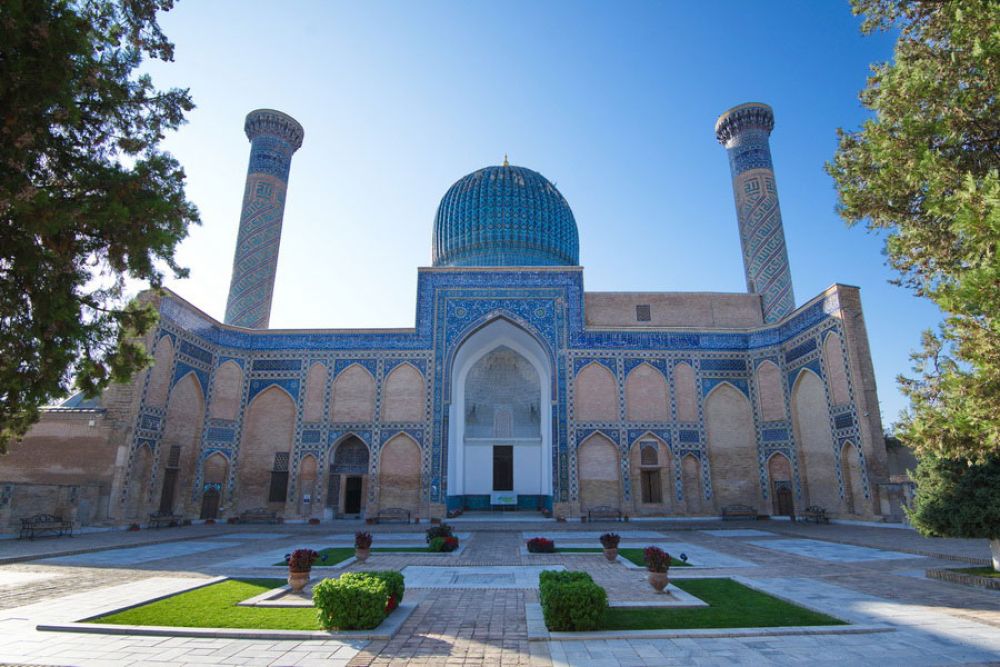

The Gur-e-Amir Mausoleum in Samarkand, Uzbekistan, is not only a masterpiece of medieval architecture but also a significant historical landmark that commemorates the tomb of the Asian conqueror Timur (Tamerlane). Situated in one of the oldest continuously inhabited cities in Central Asia, Gur-e-Amir serves as a poignant reminder of Samarkand's illustrious past and its importance along the Silk Road.
Construction of the Gur-e-Amir Mausoleum began in 1403, following the sudden death of Timur's beloved grandson, Muhammad Sultan. Intended originally to be Muhammad Sultan's tomb, it later became the family crypt for the Timurid dynasty upon Timur's death. The mausoleum stands as an architectural gem of the Timurid era, showcasing the hallmark of Islamic architecture with its azure dome, intricate tilework, and majestic interior decorations.
The development of tourism at Gur-e-Amir began in earnest during the Soviet era. With the Soviets' recognition of the site's historical and cultural importance, there were extensive efforts to restore and preserve the mausoleum, making it more accessible to the public. Since Uzbekistan's independence in 1991, the site has witnessed a resurgence of interest, aligning with the country's continuous efforts to promote cultural tourism and introduce the wonders of Samarkand to the world.
Recently, Uzbekistan has eased visa procedures to attract more tourists, leading to a significant increase in international visitors to sites like Gur-e-Amir. The government has also focused on improving tourist facilities and infrastructure, with modern accommodations and services to enhance the tourist experience. There has been a particular uptick in "heritage tourists" who are interested in the rich historical and cultural legacy of the Timurid Empire.
In addition to traditional sightseeing, experiential tourism has gained popularity, with travelers seeking to immerse themselves in the local culture through workshops, cuisine, and interactive tours. With the new High-speed train connections, tourists can now visit Samarkand more easily than ever, blending the ancient allure of Gur-e-Amir with the convenience of modern travel.
The increased footfall has brought both benefits and challenges to Gur-e-Amir. While it has bolstered the local economy and increased global awareness of Samarkand's heritage, there is also a growing pressure to maintain and preserve the mausoleum for future generations. The government and local agencies are implementing measures to manage tourist flow and ensure that conservation efforts keep pace with tourism demands.
Visitors today can marvel at the stunning architecture, learn about the history of Timurid rule, and witness the ongoing legacy of Gur-e-Amir. Engaging with local guides and historians, tourists come away with a deeper understanding of Uzbekistan's pivotal role in the history of Central Asia. Visitors are encouraged to respect the site's cultural significance and contribute to its preservation through responsible tourism practices.
With its splendid mausoleum, captivating history, and emerging tourism trends, Gur-e-Amir continues to draw visitors from around the globe, serving as a proud testament to the enduring appeal of Samarkand's heritage.